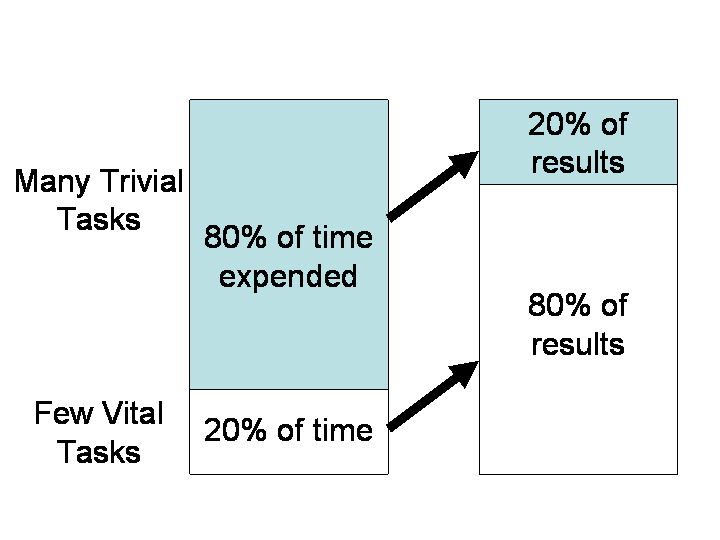
The Pareto principle or the 20/80 rule is a concept developed by Vilfredo Pareto who noticed that 80% of the land in France was owned by 20% of the population while only 20% was owned by 80% of the population. This principle explains the skewness that underlies not only wealth distribution in society but also other areas such as business, social interactions and effort.
For example, in business, it has been found that a typical business makes 80% of the income from 20% of their clients while 80% of the clients only contribute to 20% of a company’s revenue. In a typical shop 80% of the sales are made from 20% of the items on the shelves while the rest only contribute to 20%. It has also been noted that 80% of customer complaints come from 20% of the customers while a majority of the customers rarely complain.
This sounds counter intuitive considering Newton’s law of motion which says that for every action, there is an equal and opposite reaction. From Newton’s law of motion we can argue that 20% of input will produce 20% of output. Indeed it is true that garbage in garbage out. But some garbage in produces a disproportionate garbage out. Ask anyone who has made a baby. The input takes a few minutes of pleasure but the output haunts you for a lifetime.
The Pareto principle also applies to our social interactions. If you check your phone book, it is likely that you only receive or make calls to few people. That is, a small proportion of our contacts contribute to most of our conversations on the phone. If you belong to a Whatsapp group, you will notice that few people are responsible for keeping the group “alive”. A majority are silent members who rarely utter a word. A majority of social media users are silent and never update anything but the minority are what makes social media the noisy market place it is.
Of course the 20/80 rule is not an exact statistic but only a heuristic to show that in some cases a small proportion contributes to a large proportion of outcomes and vice versa.
If we apply the concept of 20/80 rule to the workplace it means that only 20% of the employees contribute to 80% of an organizations output while the rest contribute to only 20% of the organizations outcomes. This is especially true of large bureaucratic organizations like the government. Even in a team, only 20% of the members produce 80% of the output. The rest we can call them joy riders.
Let’s make it personal. If we have an 8-5 job, it means that only two of the nine hours we spend at the work place contributes to 80% of our output. The rest of the time only contributes to a small proportion of our work out put. This is generally true in many workplaces where most of the time is spent in administrative tasks, attending meetings and snacking on social media in between. If this is true, with the exception of digging ditches, it means that most of us are paid for working for fewer hours than prescribed in job descriptions.
That’s why working from home is a good thing, you don’t have to pretend to touch the mouse when the boss comes in. You can also afford to entertain yourself with You tube videos and laugh while attending a boring zoom meeting! I digress.
If we take the Pareto principle to its logical conclusion, it means that 80% of our stress is caused by 20% of our stressors. The trick therefore is to identify the stressors that have a huge impact on our lives and eliminate them. Our problems therefore are fewer or smaller than we think. The onus is on us to identify the 20% of the problems that cause us 80% of the pain. Sometimes finding a job or quitting one will eliminate most of our problems. Sometimes quitting a bad relationship will get the job done.
The thing is, only 20% of our habits are responsible for most of our success
Life is life
Fabio